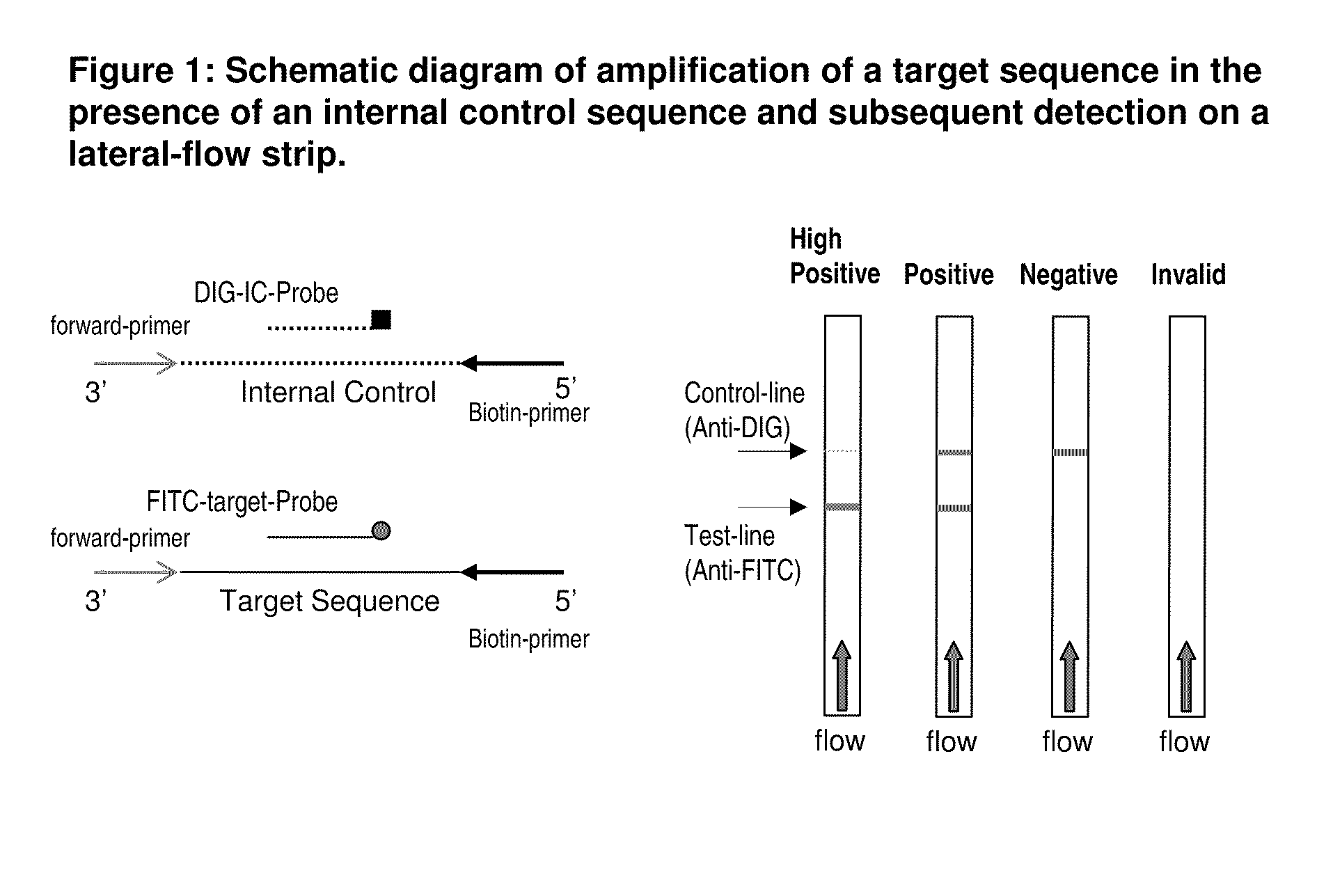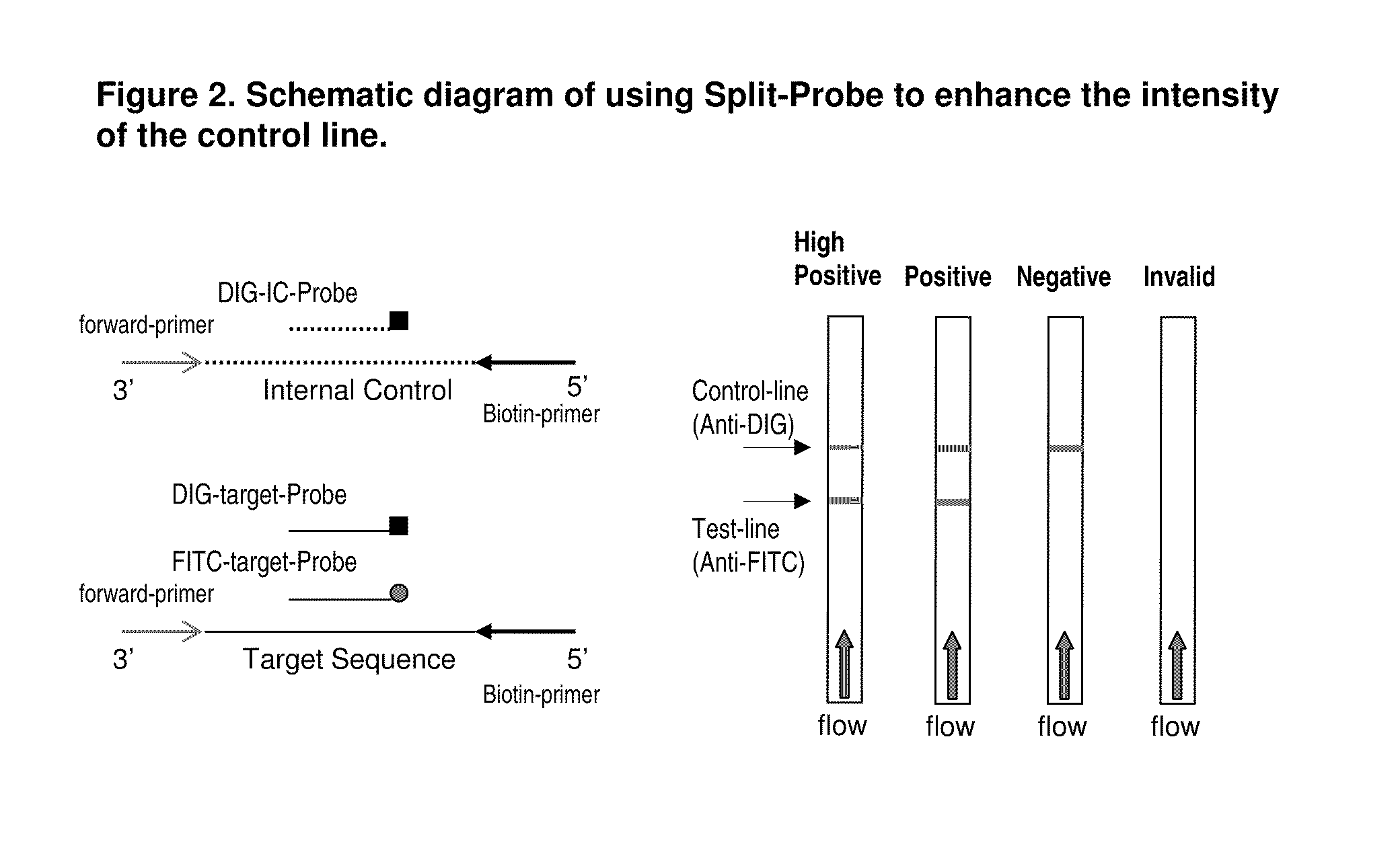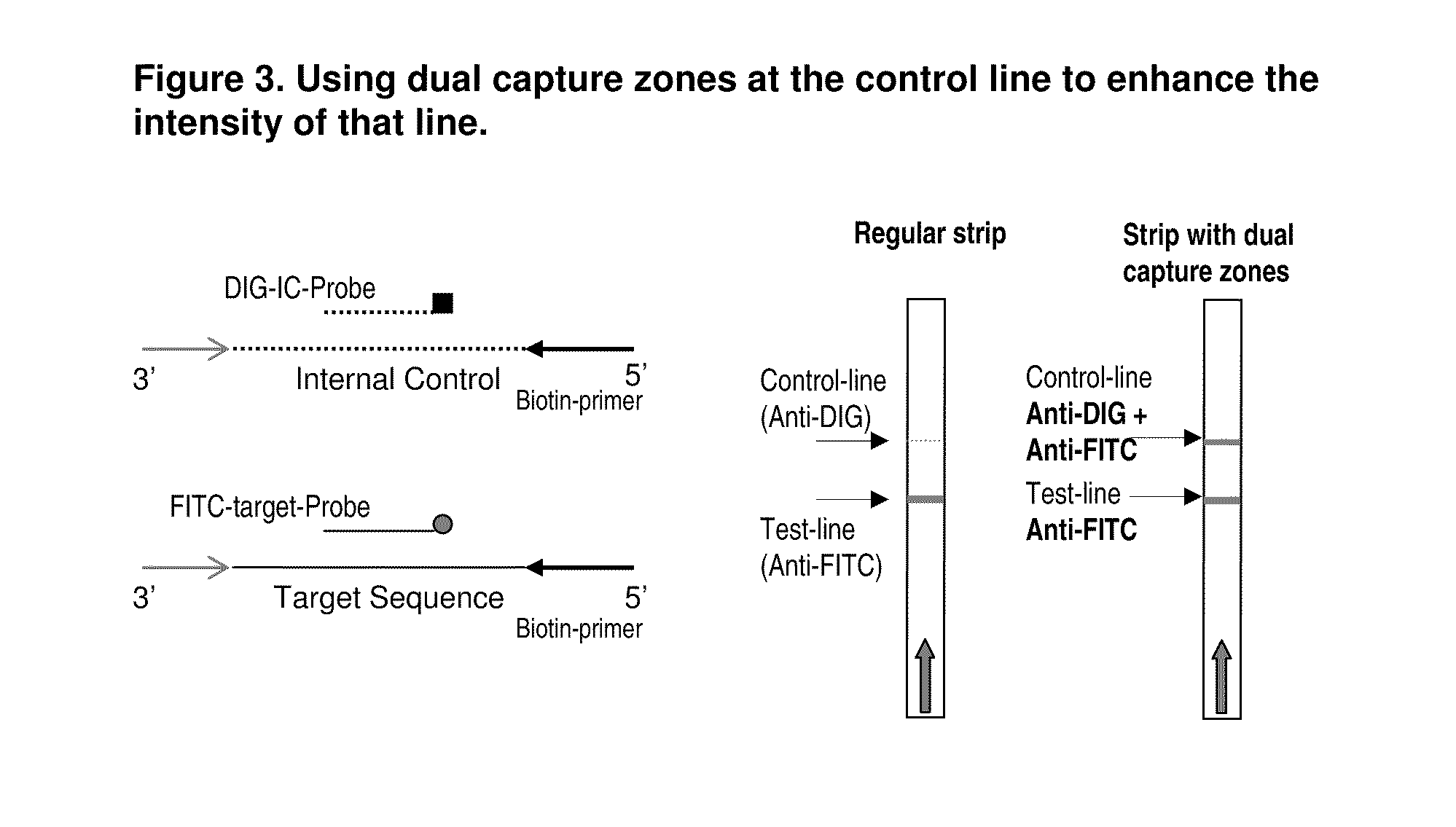Detection of nucleic acid amplification products in the presence of an internal control sequence on an immunochromatographic strip
an immunochromatographic strip and nucleic acid technology, applied in the field of detection of nucleic acid amplification products in the presence of an internal control sequence on the immunochromatographic strip, can solve the problems of affecting the co-amplification success of an internal control sequence, reducing the amplification of the internal control substantially, complicating interpretation, etc., to achieve correct interpretation, reduce or eliminate the amplification of the control nucleic acid, and facilitate the effect of success
- Summary
- Abstract
- Description
- Claims
- Application Information
AI Technical Summary
Benefits of technology
Problems solved by technology
Method used
Image
Examples
example 1
Amplification of a Target of Interest in the Presence of an Internal Control and Subsequent Detection on Lateral Flow Strip
[0035]In this example, the target of interest is the toxin A (tcdA) gene of Clostridium difficile (CD), one of the indicators of C. difficile-associated diarrhea (CDAD). The internal control (IC) template contains a randomly selected DNA fragment flanked by the same primer pair used for amplification of the target tcdA sequence cloned into a plasmid. An asymmetric tHDA reaction was carried out using a pair of primers, BioCDTAF1 (SEQ ID NO:1) and CDTAR1 (SEQ ID NO:2), which target a conserved region of the toxin A (tcdA) gene of C. difficile, in the presence of an IC template, a target probe, and an IC probe. Other amplification methods (i.e. PCR) can also be used to amplify the target and IC sequence. To perform asymmetric tHDA, the excess primer, BioCDTAF1, was labeled with biotin at its 5′-end. The target probe, CDTAP3FI (SEQ ID NO:3), was labeled with fluores...
example 2
Use of Split Probe Design to Amplify and Detect a Target Sequence in the Presence of an Internal Control Sequence
[0055]In this example, a method is disclosed to enhance the control line by using a split probe design in which the detection probe for the target sequence is split into two groups, one group for the visualization of the target amplicon at the corresponding test line and the other for the visualization of the target amplicon at the control line. In this example, the target of interest is a specific sequence in the human herpes simplex virus type 2 (HSV-2; Genbank accession No. AB442016 REGION: 424-523, 100 bp). A specific forward primer, HSVF (SEQ ID NO: 5), and biotin-labeled reverse primer, BioHSVR (SEQ ID NO: 6), were used to amplify the 100 bp HSV-2 fragment. The internal control for the HSV assay was constructed by cloning a random sequence flanked by the HSVF and BioHSVR primer sequences (HSVIC, SEQ ID NO: 7) into a pCR-Blunt II-TOPO plasmid (Invitrogen, Carlsbad, C...
example 3
Determine the Optimum Ratio of the Split Probes
[0087]The optimal ratio of the target detection probe for the test line versus the target detection probe for the control line can be determined experimentally such that the splitting of the detection probe has minimal impact on the detection sensitivity of the assay while enhancing the control line to a detectable level.
[0088]In this example, a method is disclosed to optimize the detection probe concentrations. Generally, the optimization was performed with at least two different concentrations of the target input. One optimization was performed with a high copy number of target to address the following question: What is the minimal amount of the target detection probe required for the control line when there is almost no internal control DNA being amplified? In this situation, the presence of the control line solely depends on the amount of the target detection probe utilized for the control line. Another optimization was performed wi...
PUM
 Login to View More
Login to View More Abstract
Description
Claims
Application Information
 Login to View More
Login to View More - R&D
- Intellectual Property
- Life Sciences
- Materials
- Tech Scout
- Unparalleled Data Quality
- Higher Quality Content
- 60% Fewer Hallucinations
Browse by: Latest US Patents, China's latest patents, Technical Efficacy Thesaurus, Application Domain, Technology Topic, Popular Technical Reports.
© 2025 PatSnap. All rights reserved.Legal|Privacy policy|Modern Slavery Act Transparency Statement|Sitemap|About US| Contact US: help@patsnap.com



